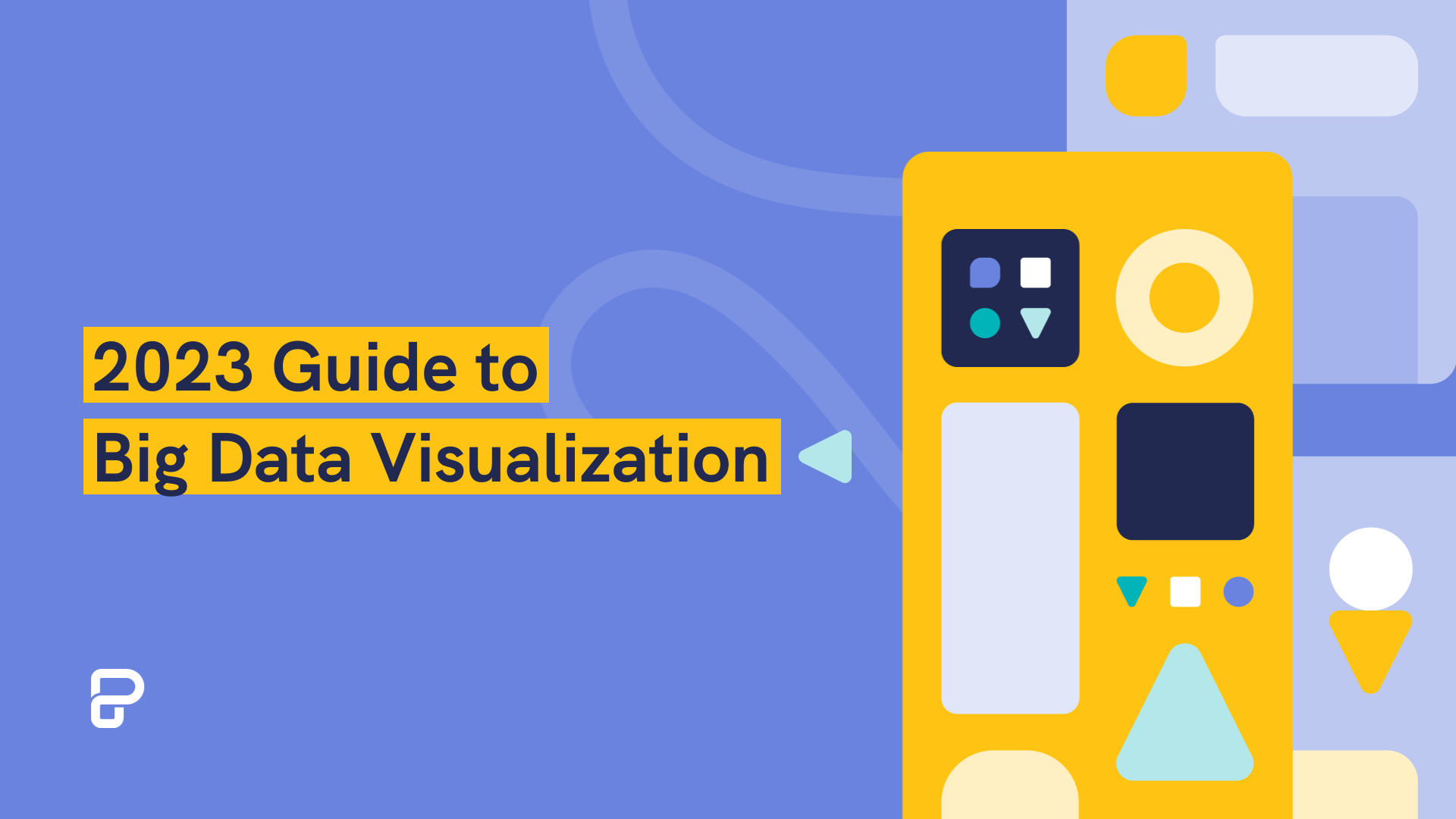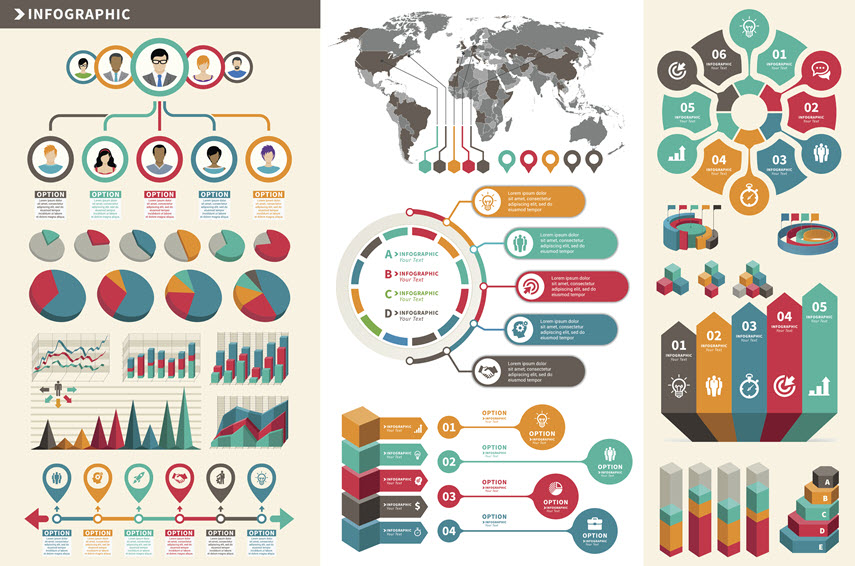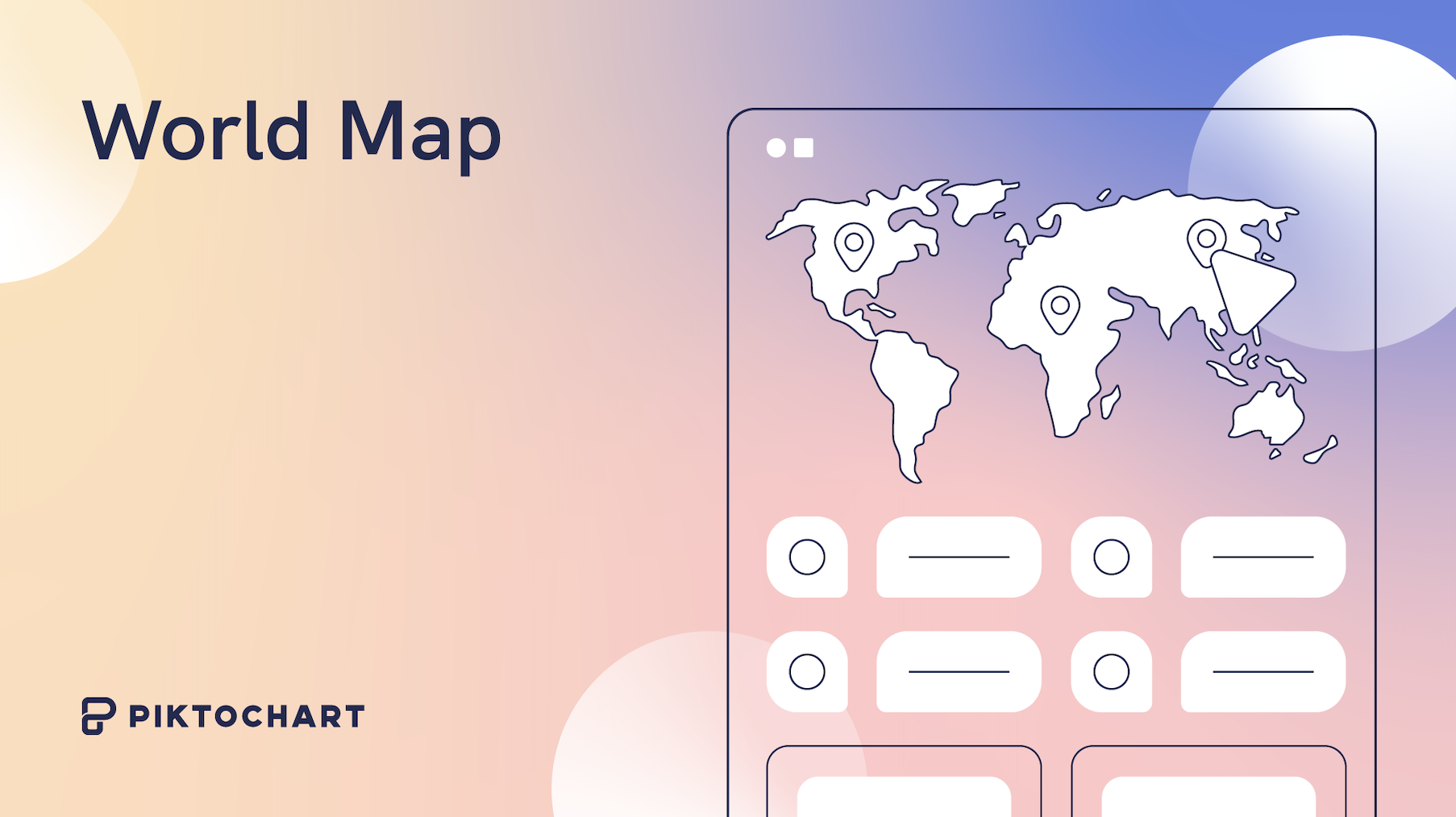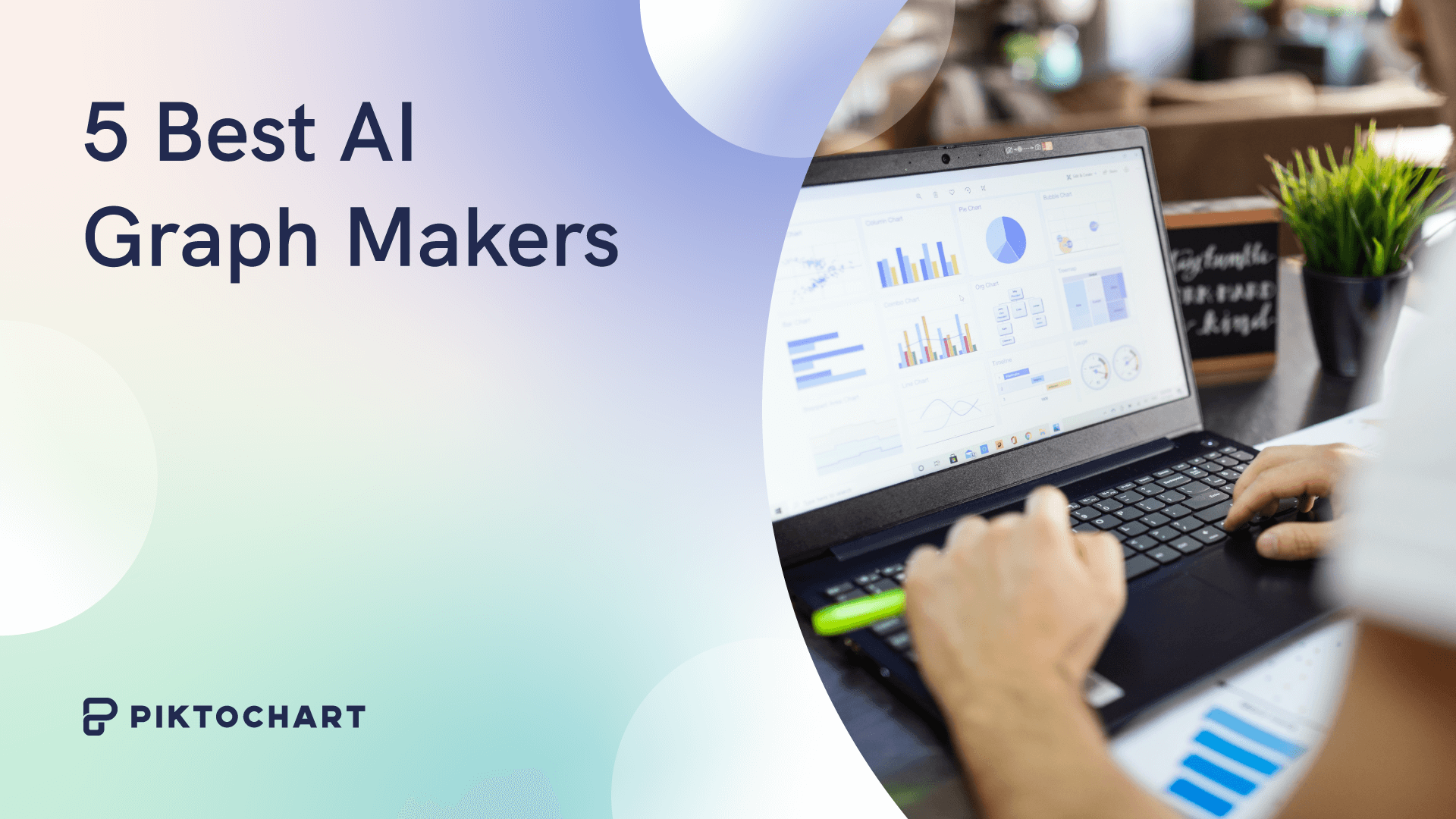Big data visualization is the process of representing large sets of unstructured data points using graphics or charts. You can use big data visualization techniques to make large data sets or raw data simpler to understand and make drawing conclusions from them easier.
Have you heard the phrase a picture paints a thousand words? Well, it’s certainly true when it comes to big data visualization.
We’re going to look at some of the uses and benefits of big data visualization, some of the most common big data visualization techniques, why is data visualization important for industries and how it benefits them.
Piktochart is an intuitive tool that allows easy customization for brands, data visualization, and online collaboration. It offers professionally-designed templates to create reports, presentations, brochures, and more. Get started for free.
What is big data visualization used for?
Big data visualization has many uses within a wide variety of organizations and can provide a wealth of benefits.
Reviewing large amounts of data
Large data sets can be hard to comprehend in their raw form. In fact, when dealing with big data, viewing an entire dataset on a monitor is often impossible.
Big data visualization can make it easier to review large amounts of raw data by representing them in a way that’s easy to read and understand, allowing the user to create a narrative from the data.
Big data visualization represents complex data and sets in an easy-to-understand manner without sacrificing accuracy. This allows users to draw accurate and dependable conclusions from the data, which can reliably inform the decision-making process for decision-makers.
Identifying the correlation of events
Big data is often stored in an unstructured data format or in a tabular configuration in a program like pandas DataFrame. It can combine various data sources, including text, images, audio, and video. This can make it difficult to compare the various types of large amounts of data against each other to identify patterns and correlations.
Using big data visualization lets you read and understand disparate data sources together, and you can explore data sets so analysts can more easily identify any correlation of events across various types of data.
Big data visualization tools often operate in real-time, collating, refining, and presenting data rapidly following its generation. This means that any user accessing big data visualization tools receives up-to-date and relevant data, allowing them to make well-informed decisions and react to changes quickly as they happen.
Spotting trends
One of the most important uses of big data is to inform business decisions. This can be difficult to achieve when working with large amounts of data, as it can be hard to identify patterns from lines of unwieldy text and numbers.
Big data visualization can help bring previously hidden patterns, knowledge, and to the forefront, enabling decision-makers and data analysts to make well-informed business decisions by presenting them with a clearer picture of the data.
For example, line graphs or pie charts can clearly show trends and patterns in complex datasets while highlighting outliers and anomalies.
Data presentation
Big data visualization not only makes it easier to understand and analyze datasets but also makes it easier to present them to others.
It’s easy to identify patterns and trends when data is visualized, making it easier to make a case for certain business decisions for executives or outside stakeholders. This is especially true for those less tech-savvy types who get themselves locked out of their email or have to ask, “what is an API?”.
Using big data visualization tools allows you to gather large datasets together in one place, allowing for easier comparison. You can display various graphs and other representations of the data in easily navigable dashboards, enabling users to compare and contrast historical data quickly.
It is also easier to share big data when you’ve visualized it. You can easily drop graphs and other visual representations of data into reports, emails, or presentations and then share them across an organization or with outside partners.
What are the types of big data visualization?
There are many types of data visualization with a number of different benefits for business, with some new visualization techniques being more appropriate for specific types of data than others.
For example, a computer and data scientist may choose between using a pie chart or bar chart for data analysis. If you want to look at big data analytics about locations, the user should consider using interactive heat maps or possibly pivoting tables.
In this article, we’ll explore the 10 types of big data visualization examples that can be used to help you figure out which type is the easiest to work out.
You can explore Piktochart’s graph maker by simply creating a free account. It has a sleek look with a tool that allows easy customization according to your brand guidelines, representing your data creatively and accurately.
Charts
Charts are some of the most commonly used methods of data visualization.
- Line
Line charts depict data with a fixed value on one axis, such as time, and a variable on the other, such as revenue. These charts show the relationship between the two values, such as whether revenue has increased or decreased over time.
- Pie
Pie charts are a graphical form used to represent data values as a proportion of the whole dataset. They are a good way to show the relative size of the different portions of hierarchical data, highlighting trends.
- Bar
Bar charts depict categories on one axis, and values on the other, allowing you to compare various data across points or data sets.
Plots
Plots are useful when identifying and comparing the relationships between two or more large datasets.
- Scatter
Scatter plots use dots to show the value of various numeric variables in a bar graph. The way the plots group together can identify patterns and trends within a dataset.
- Bubble
Bubble plots are like scatter plots, but they can show additional information by varying the size of the plot. They are useful when multiple variables are shown on one line chart or graph and can highlight deeper trends and patterns within the data.
Maps
Maps can help highlight geographical patterns in data or provide a quick visual summary of a dataset.
- Heat maps
A heat map is a visualization method of information displayed on an arranged chart or table which is used to depict various color nuances and intensity of color. The use of an interactive thermographic is useful for data analysis that is seemingly unending. In the case of very wide values, heat maps are much easier to use to analyze more complex representations of data and quickly visualize them.
- Geospatial
Geospatial maps highlight data in relation to geographic locations. You can use colors and other annotations to highlight the relationships between geographic locations and other variables. This helps to visualize big data and identify and analyze trends and patterns based on geographic factors.
Network Diagram
A network diagram shows the connections and relationships between various components, displayed as ‘nodes’. They can be useful when mapping data from social networks or product sales across geographic locations.
Histogram
Histograms can represent the frequency distribution of data by grouping data into ranges and depicting the number of data points within that range.
Word Cloud
A word cloud shows the frequency of specific words and phrases within a dataset, allowing for the analysis of textual data. The more times a word appears, the larger it is in the cloud.
Funnel Chart
A funnel chart is a popular way to represent sales data, depicting the number of users or customers at each stage of a sales funnel. This allows businesses to identify where they’re losing and gaining customers and therefore where marketing and sales teams need to focus their efforts.
Dashboards
Dashboards allow you to display multiple graphs and charts alongside each other in an interactive dashboard. This enables quick comparison between datasets and also makes it easy to share visual representations of data with those inside and outside the organization.
Infographics
Infographics can combine many different visual representations of data in order to convey meaning quickly at a glance. This could include text, graphs, diagrams, interactive charts, images, and icons. Take a look at these infographic examples for a taste.
Animated and interactive design
Animated and interactive visualizations of data can engage viewers and encourage them to think more about what is being communicated. Viewers can uncover additional layers of data by interacting with the information, providing even deeper analysis and revealing further patterns and trends which may otherwise have remained hidden.
Industries that benefit from using big data visualization
Many organizations across many different industries use big data visualization to analyze data for their benefit.
Banking and finance
Organizations in the banking and finance sector deal with huge volumes of data daily. With this, data scientists can identify market trends, understand customer behavior, and detect fraud and other risks.
Big data visualization can consolidate data from various sources, allowing organizations to generate reports in real-time and provide relevant analysis. This is especially useful to those in the banking and finance sector when it comes to risk reporting, financial reporting, and performance analytics.
Being able to identify patterns, trends, and anomalies quickly can also help financial institutions detect instances of fraud or other potential risks.

Healthcare and education
The healthcare industry uses big data visualization to represent complex medical statistics in a more easily digestible manner.
The healthcare sector can make use of geographic representations of data, such as choropleth maps, to show patterns in the spread of diseases or to identify correlations and trends between geographic locations and healthcare issues.
The education sector can use big data visualization software to analyze the performance data of learners, enabling educators to develop learning plans that will provide increased engagement and lead to better results.
Big data visualization makes it easy to identify patterns and trends in learning management and learning outcomes and can show the correlation between these and other factors, such as investment in resources and equipment. This enables leaders in the education sector to make more informed, data-driven decisions about the distribution of resources and funding.

Hospitality and retail
In the hospitality industry, organizations can leverage big data visualization in various ways. For example, hotel chains can utilize big data visualization to track metrics such as the market penetration index, which measures the occupancy level of a hotel against the average market occupancy level.
Similarly, organizations can analyze the average rate index in order to determine how competitively priced the rates of a particular hotel are. Analyzing these metrics with the aid of big data visualization enables business leaders to identify whether they need to make changes to remain competitive.
In retail, big data can be used for everything from forecasting demand to predicting the spending habits of customers by analyzing historical data and looking for trends and patterns. This data science helps inform decisions when reordering stock and designing marketing campaigns, allowing retailers to plan ahead with accuracy to meet their targets.
Retailers can also use big data visualization when attempting to personalize the customer experience. They can use transaction data, order histories, and customer service queries to paint a picture of the types of customers a business has. This allows them to provide personalized marketing and customer service, which can lead to higher customer satisfaction and overall sales revenue.

Government and security
Big data visualization has applications when it comes to government and security. Numerous sources generate data in these sectors, including telephone calls, emails, social media posts, census data, satellite imaging, and even CCTV cameras.
Organizations visualize this data in several ways, including maps, to help plan essential services such as education, healthcare, and infrastructure.
By identifying areas experiencing rapid population growth, decision-makers can decide where they need to reinforce or expand infrastructure to continue servicing the public efficiently.
Law enforcement and public safety organizations can utilize this big data visualization tool to help track the emergence of potential threats to public safety. This can include threats such as cyber-attacks which can lead to data breaches.

Transportation and communication
Many transit planners use big data visualization to plan services and communicate information to the public.
Bar charts and line charts are effective ways to compare ticket purchases over time, allowing planners to see the demand for public transport services in specific neighborhoods.
Scatter plots can go deeper into this information, showing the correlation between ticket sales and the identities of those who bought them, allowing planners to identify patterns relating to the income, age, and gender of service users.
Maps are an incredibly useful data visualization when it comes to planning transportation. They can easily highlight trends and patterns in the data, such as which routes experience the highest or lowest volumes of passengers and which services may experience disruptions or delays. This can greatly help when planning services and allocating resources.
The communications sector can also use big data visualization to great effect. Monitoring customer experience can help providers ensure they provide good customer service and alert them to potential outages or other service disruptions.
Big data visualization also assists communications providers in carrying out targeted marketing by identifying customer behavior patterns and customer loyalty. They can use this data to try to reduce customer churn.

Conclusion
Big data visualization is one of the most powerful ways in which organizations can extract value from their data. Getting a handle on representing data visually is just as important as knowing agile terms or accurately projecting your costs. It presents business leaders and decision-makers with accurate graphical representations of the data, allowing them to make well-informed decisions.
Each method of visually representing data has its own benefits, so ensuring that the right graph, map, or infographic is used for the right job is essential. Once it is, identifying patterns and trends, and making data-driven business decisions, will be easier than ever.
If you’re considering big data visualization tools, consider using Piktochart’s graph maker to visualize your big data. Get started for free.



























